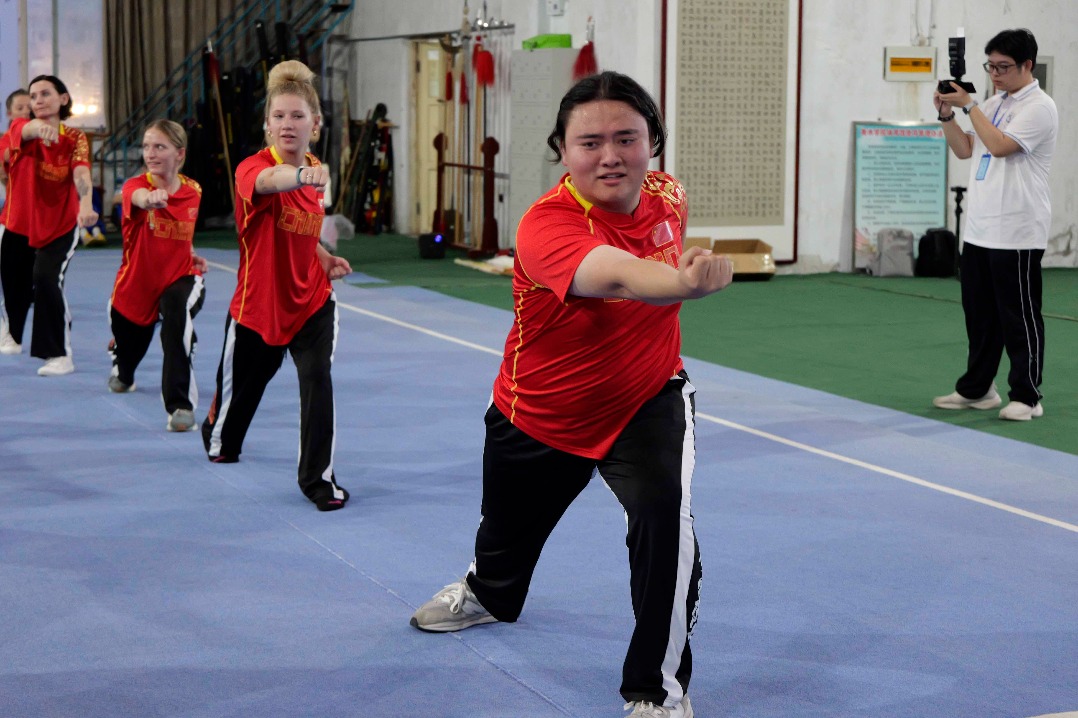Strides made in cultural preservation
All-around efforts bear fruit by reviving popularity of traditional crafts, practices


Annual celebration
Building on his initiatives, the 2025 Cultural and Natural Heritage Day will be celebrated on Saturday. Established in 2006, the annual event highlights the country's efforts to preserve and rejuvenate China's cultural relics.
Since 2011, more than 10 billion yuan ($1.39 billion) has been allocated in the central budget to support the protection and inheritance of representative national intangible cultural heritage items and the activities carried out by related national-level inheritors, according to the Standing Committee of the National People's Congress, China's top legislature.
When visiting North China's Shanxi province in 2022, Xi said that more efforts must be made to conserve the country's cultural heritage and promote its role in contributing to economic and social development and people's quality life.
Government organs, including the Ministry of Culture and Tourism, the Ministry of Human Resources and Social Security and the National Rural Revitalization Administration, have been promoting the development of intangible cultural heritage workshops to support rural vitalization.
They have encouraged broader participation from various sectors in establishing such workshops and outlined concrete measures such as boosting employment, enhancing training programs, cultivating local promoters, improving product competitiveness, expanding sales channels and strengthening publicity and promotion.
As of June 2024, a total of 9,100 such workshops had been established across the country. Most of these are built around leading local enterprises or cooperatives engaged in intangible cultural heritage practices. They have become vital platforms for the living preservation of traditional culture and serve as powerful engines driving rural vitalization.
Chen Yunzhen, an experienced ethnic Qiang embroidery artist from Beichuan Qiang autonomous county in Southwest China's Sichuan province, has managed over the years to promote the art through such a workshop in her hometown.
To date, she has led her team to develop a wide range of products featuring Qiang embroidery, from home decorations and tailor-made clothes to creative cultural products, while providing training and employment to more than 500 local women.
"Our business has been growing, and we're committed to bringing this craft with a history of more than 1,000 years to modern life," Chen said.
According to a 2024 report from the top legislature based on a nationwide inspection focused on reviewing the implementation of the country's Intangible Cultural Heritage Law, a large number of intangible cultural heritage items have been effectively protected since the law took effect in 2011.
The report said that the intangible cultural heritage work mechanism has been continuously improved over the years, public awareness of efforts to protect related items has deepened, and heritage's role in serving contemporary society and benefiting the people has increasingly grown.
Zhang Pingjun, deputy director of the School of Law at Huaqiao University in Quanzhou, Fujian province, said that China's legislative efforts to protect intangible cultural heritage have played an active role in enhancing awareness of protection, cultivating legislative talent, innovating legal protection methods, and aligning with international intangible cultural heritage legislation.
The year 2024 marked the 20th anniversary of China joining the UNESCO Convention for the Safeguarding of the Intangible Cultural Heritage. To date, the country boasts more than 100,000 intangible cultural heritage items, including over 1,550 designated as national-level items.
After the inscription of traditional tea processing techniques and associated social practices in China on UNESCO's Representative List of the Intangible Cultural Heritage of Humanity in November 2022, Xi said the inscription is significant to the promotion of China's tea culture.
Xi also emphasized the need to promote the creative transformation and development of the best of traditional Chinese culture, enhance the cohesion of the Chinese nation and the appeal of Chinese culture, deepen exchanges and mutual learning with other civilizations, better tell the stories of China's fine traditional culture, and better present Chinese culture to the world.
As of the end of last year, 44 Chinese items have been inscribed on UNESCO's Representative List of the Intangible Cultural Heritage of Humanity, with the latest addition in December of Spring Festival, which encompasses the social practices of the Chinese people in celebrating the traditional new year.
Yuan Li, a researcher at the Chinese National Academy of Arts, noted that living inheritance — passed down through oral instruction and personal demonstration — is vital for the transmission of intangible cultural heritage, and emphasized that many techniques and crafts have been preserved primarily through this method.
Yuan added that "intangible cultural heritage most embodies the grassroots character of a country and best represents a nation's aesthetic customs".
Innovative initiatives
The government's support for intangible cultural heritage has also encouraged industrial players' participation in the field.
With a history of more than 70 years, Beijing Gongmei Group, a leading enterprise in China's arts and crafts industry, launched the Yuxun program in 2023 to explore modern-day uses of traditional arts and crafts.
It has rolled out a wide range of creative cultural products featuring traditional crafts, including filigree inlay and imperial embroidery, which have been popular among modern-day consumers, especially young people, noted Wang Jingjing, head of Beijing Gongmei Group's operations management department.
In March this year, the company launched a brick-and-mortar shop, Yuxun Jingxi, to bring visitors closer to the charm of Chinese culture through intangible cultural heritage workshops, pop-up exhibitions, tea and coffee lounges, and retail. It showcases a variety of heritage techniques and products.
yangfeiyue@chinadaily.com.cn
- TV show brings 12 architectural treasures to life
- Digital innovations breathe new life into Foguang temple
- Cretaceous mammaliaform tracks first found in South China
- China accelerates push for green, smart ports
- US-China student exchange bridges cultures in Hebei
- BRI countries highlight innovation-driven development





































